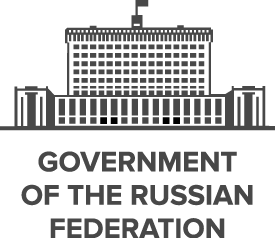Founded in the 12th century, the Principality of Muscovy was able to emerge from over 200 years of Mongol domination (13th-15th centuries) and to gradually conquer and absorb surrounding principalities. In the early 17th century, a new ROMANOV Dynasty continued this policy of expansion across Siberia to the Pacific. Under PETER I (ruled 1682-1725), hegemony was extended to the Baltic Sea and the country was renamed the Russian Empire. During the 19th century, more territorial acquisitions were made in Europe and Asia. Defeat in the Russo-Japanese War of 1904-05 contributed to the Revolution of 1905, which resulted in the formation of a parliament and other reforms. Repeated devastating defeats of the Russian army in World War I led to widespread rioting in the major cities of the Russian Empire and to the overthrow in 1917 of the imperial household. The communists under Vladimir LENIN seized power soon after and formed the USSR. The brutal rule of Iosif STALIN (1928-53) strengthened communist rule and Russian dominance of the Soviet Union at a cost of tens of millions of lives. After defeating Germany in World War II as part of an alliance with the US (1939-1945), the USSR expanded its territory and influence in Eastern Europe and emerged as a global power. The USSR was the principal adversary of the US during the Cold War (1947-1991). The Soviet economy and society stagnated in the decades following Stalin’s rule, until General Secretary Mikhail GORBACHEV (1985-91) introduced glasnost (openness) and perestroika (restructuring) in an attempt to modernize communism, but his initiatives inadvertently released forces that by December 1991 splintered the USSR into Russia and 14 other independent republics.
Following economic and political turmoil during President Boris YELTSIN's term (1991-99), Russia shifted toward a centralized authoritarian state under the leadership of President Vladimir PUTIN (2000-2008, 2012-present) in which the regime seeks to legitimize its rule through managed elections, populist appeals, a foreign policy focused on enhancing the country's geopolitical influence, and commodity-based economic growth. Russia faces a largely subdued rebel movement in Chechnya and some other surrounding regions, although violence still occurs throughout the North Caucasus.
Russia is a semi-presidential federation.
Members:
Resources
Displaying 331 - 335 of 1046Federal Law No. 244-FZ on transfer of land of protected areas to regional, municipal and federal property.
This Federal Law regulates the issues of the plots of land of protected areas of federal significance and establishes as follows: (a) plots of land under edifices and constructions of federal significance, allotted to federal executive bodies on condition of lease and open-ended land tenancy shall be considered federal property; (b) plots of land under edifices and constructions of regional significance, allotted to regional executive bodies shall be considered regional property; and (c) plots of land under edifices and constructions of municipal units, allotted to local self-government sha
Regional Law No.612-KZ “On objects of cultural heritage”.
The scope of this Regional Law shall be performance of regional plenary powers related to conservation, management, promotion and state protection of the objects of cultural heritage. Plenary powers of the regional state bodies shall include performance of regional state supervision over the state, keeping, conservation, management, promotion and state protection of the objects of cultural heritage of regional and local (municipal) significance and decision-making related to constitution of protected area containing objects of historical and cultural heritage.
Regional Law No. 565-PK “On protected areas”.
This Regional Law classifies regional protected areas as follows: (a) natural parks; (b) state nature reserves; (c) nature monuments; (d) dendrological parks and botanical gardens; (e) protected landscapes; (f) protected nurseries; and (g) historical and natural complexes and areas. Cultural memorial parks and ecological parks can also be set up on the regional territory. The presence and location of protected areas shall be taken into consideration in the process of elaboration of land-use planning schemes.
Regional Law No. 3403/967-V-OZ amending Regional Law No. 118/16-III-OZ “On turnover of agricultural land”.
Article 1 shall be amended to add the following wording: “This Regional Law establishes the list of mass media authorized to publish communications (information) related to transactions with land plots and land shares of agricultural land”.
Amends: Regional Law No. 118/16-III-OZ “On turnover of agricultural land”. (2015-03-06)
Regional Law No. 3129-KZ amending Regional Law No. 656-KZ “On protected areas”.
Article 4 shall be amended to add the following wording: “Supreme regional state body in the sphere of protected areas shall make decisions related to setting up on land plots and delimited areas of waterbodies of special protection regime of regional significance with regulated economic activities”.
Amends: Regional Law No. 656-KZ “On protected areas”. (2007-07-25)


